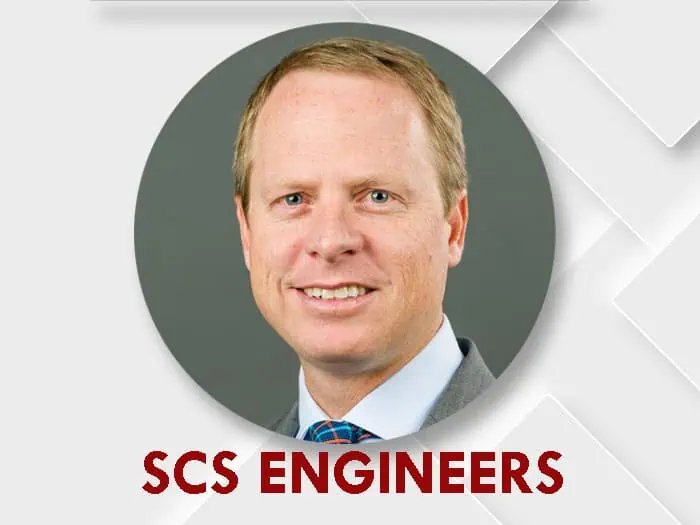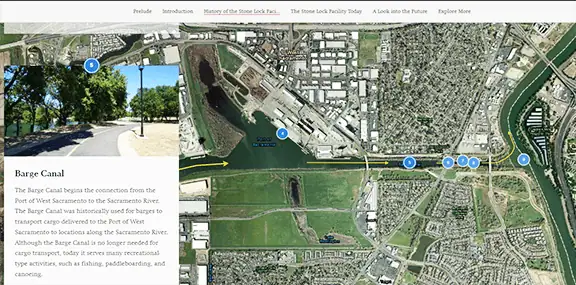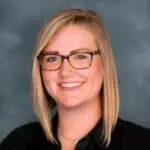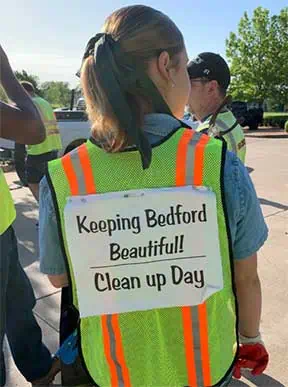


During the October 2025 Committee Week in Atlanta, Georgia, ASTM International named Justin Rauzon to be the Recording Secretary Officer based on his technical and management experience with investigations at industrial, commercial, landfill, greenfield, and residential properties, combined with his extensive experience with environmental laws and regulations in the U.S. and Mexico. At SCS Engineers, he guides clients through complex real estate and redevelopment projects, emphasizing sustainable and defensible outcomes.
What is the ASTM Committee E50?
The ASTM Committee E50 is the main technical committee that develops voluntary consensus standards for environmental assessment, risk management, and corrective action. The E1527 Standard for Phase I Environmental Site Assessments (Phase I ESAs) is a critical standard in use nationwide for conducting environmental due diligence in commercial real estate transactions. It supports compliance with the U.S. Environmental Protection Agency’s All Appropriate Inquiries rule under the Comprehensive Environmental Response, Compensation, and Liability Act and related laws.
The E1527 Standard is updated typically every five to seven years, and the next round of updates kicks off in January 2026. Given the significant impact that standards like E1527 have on real estate transactions and risk management, a meticulous and reliable recordkeeper is vital for the integrity of the committee’s work. As Recording Secretary, Mr. Rauzon will support the documentation and coordination of subcommittee activities, including standards updates, meeting summaries, and procedural communications among ASTM committee members.
Due Diligence and Environmental Experience and Expertise
Justin Rauzon is SCS Engineers’ national expert on environmental due diligence and is experienced in all aspects of environmental services. He has a diverse background in biological and environmental sciences, and regularly performs environmental assessments and compliance audits at sites in the U.S. and Latin America. He completed ASTM Officer Training in West Conshohocken, Pennsylvania, in September 2024. His appointment reflects his deep expertise in environmental assessment practices and his longstanding commitment to maintaining high environmental quality and risk management standards.
“I’m honored to be part of the next standard update. Contributing to the next round of discussions and revisions to such an important standard is humbling and rewarding. I was pleased that my colleague, Megan Husic, will join me at ASTM Committee Week as an ASTM Emerging Professional. I look forward to working jointly with her and the other officers on the 1527 Committee,” said Mr. Rauzon.
If you’d like to contact Mr. Rauzon, please visit SCS Engineers or say hello on LinkedIn.
SCS Engineers announces the promotion of Eric Williams as the firm’s new National Director of Brownfields Redevelopment. Eric has over three decades of experience providing a full range of environmental services, focusing on brownfield redevelopment. His career includes experience with large environmental consulting firms, helping a specialty lender build a national footprint for brownfield funding, and running his own companies that exclusively developed environmentally challenged properties. His expertise spans various industries, including local government, commercial businesses, heavy industry, landfills, and mined land restoration.
As a thought-leader, Eric puts his expertise to work – investigation and cleanup, environmental liability management, real estate transactional functions, project entitlements, and funding. His multifaceted skill set helps our clients, from identifying environmental liabilities before buying or selling to addressing contaminants cost-consciously, and restoring the land’s health and value, states Senior Vice President and National Environmental Market Leader Michael Miller.
Eric has developed deep expertise in brownfield project funding. Currently, EPA and state brownfield grants support many projects in the U.S. The 2025 EPA brownfield grants were awarded to recipients earlier this year, and EPA will open applications for the next round of brownfield grants sometime in the next couple of weeks, but it will be even more competitive than ever as the Bipartisan Infrastructure Law dollars will no longer fund these programs.
As Eric Williams put it in his 2025 National Brownfields Training Conference Workshop called “Stack & Sequence”:
Brownfield projects require multiple capital sources to succeed; the more difficult the project, the more capital sources. We must build funding strategies that include various brownfield capital sources, ranging from brownfield-specific funding to traditional redevelopment financing and more creative sources. A deeper dive shows how sources can be integrated and stacked, then used sequentially for the various stages of redevelopment to be combined with private investment.
To learn more about Brownfields, please visit the SCS Engineers’ website to find educational materials or contact the firm’s experts. You may also reach Eric Williams on LinkedIn.
The upcoming round of EPA Brownfields Multipurpose, Assessment, RLF, and Cleanup (MARC) Grant applications is your community’s final opportunity to benefit from expanded funding through the Bipartisan Infrastructure Law (BIL). With this expanded support ending, competition is expected to be intense, and future grants could be smaller and scarcer.
Don’t miss this critical moment to secure transformative resources for revitalization and economic growth. Partner with SCS and start preparing your application now to stand out and make an impact.
EPA anticipates issuing the following solicitations for funding in fall 2025:
Let’s lay the groundwork today, so you’re ready when it counts. Reach out to SCS to start building your competitive, on-time application. After you contact us, one of our grant experts will reach out to schedule a virtual meeting.
The strongest applications don’t come together overnight. They are forged well in advance through strategic planning and expert insight.
At SCS, we guide our clients through every step of the process, helping you confirm eligibility, craft a compelling story, and compile the documentation that makes your application stand out. Our team has a strong track record of securing Brownfields funding for communities nationwide. When you work with us, you’re not just meeting deadlines but increasing your chances of success.
MARC Grant Funding Resources:
SCS Engineers is excited to participate in the MATC Business, Creative Arts & STEM Career & Internship Fair!
Join us on Wednesday, October 1, from 11:00 a.m. – 2:00 p.m. at the MATC Downtown Campus to explore career opportunities with our team. SCS Engineers provides environmental consulting and engineering services in solid waste management, renewable energy, remediation, and sustainable infrastructure.
We’re eager to meet students and alumni from the Business, Creative Arts, and STEM pathways who are ready to make an impact through internships, apprenticeships, and full-time career opportunities. Stop by our booth to learn how you can grow your skills and career while contributing to a more sustainable future with SCS Engineers. Register now.
Congratulations to Gabrielle Stephens for her promotion to lead SCS’s Southwestern U.S. Air Compliance Group. She brings over two decades of client success to the role.
Greenhouse gas (GHG) reporting or verification, regulatory air compliance, and air permitting services fall within Ms. Stephens’ purview. She leads teams that support clients in the solid waste and manufacturing industries, who find value in having a regulatory liaison to navigate ever-changing federal, state, and local regulations. These teams help maintain efficient operations and enhance business communication with stakeholders.
Regulatory agencies often operate independently, and knowledgeable environmental consultants know how best to meet multiple agency data requirements, resulting in positive relationships between agencies and clients. SCS clients find that improved communication helps minimize or prevent permitting and compliance delays. Agencies, especially air district staff, can depend on the accuracy of Clean Air Act experts who are experienced with newer technologies proven to work, but potentially new in a district.
Ms. Stephens’ experience spans multiple states, numerous air districts and local enforcement agencies.
Beyond her work in air permitting and compliance, Ms. Stephens works on emissions estimates and inventories and has extensive experience preparing permit-to-construct/operate and Title V permit applications. She has also undertaken projects evaluating and reporting to meet the federal Greenhouse Gas (GHG) Rule and the AB 32 Landfill Methane Rule. Her collaborative efforts with the solid waste industry contribute to multiple facilities obtaining landfill gas-to-energy and RNG permits that positively impact air quality.
Ms. Stephens’ air compliance audits, permitting, and compliance reporting for manufacturing facilities, including fiberglass boats, product removers, ceramics, paper products, and cement/aggregates, help ensure regulatory compliance and improve operational efficiency.
Additional Clean Air Act Resources:
GIS interactive maps provide geographic context and enable users to interact with mapped data using geography and visualization to tell the redevelopment story, combining maps with multimedia content. They are an engaging tool for increased transparency, accountability, and public engagement in planning for sustainable places, such as brownfields, and show in real-time project updates, providing the public with a sense of accomplishment using the latest data.
StoryMaps help build trust and encourage ongoing engagement with diverse audiences by facilitating collaboration among teams, stakeholders, agencies, and the community. It allows them to understand and even contribute insights directly through the StoryMap. Documents become interactive narratives, making it easier for wider audiences to access and understand complex planning information while facilitating information sharing and feedback.

GIS can enable the integration of various data sets related to brownfield sites, such as contamination levels, environmental risks, and remediation plans. Use it as a project management tool to manage redevelopment projects by integrating spatial and attribute data. You’ll also build an archive of historical planning data, invaluable for long-term planning, due diligence, permitting, and analysis.
The StoryMap pictured above showcases successes and how the brownfield redevelopment provides economic opportunities to potential developers. They effectively communicate the positive impacts of brownfield redevelopment, such as job creation and increased property values. And this StoryMap highlights brownfields projects in EPA Region 5.
Where Can You Learn More?
At the 2025 Brownfields Conference in Chicago, learn the essential steps and considerations for creating an effective StoryMap, including the importance of assembling a skilled team, and discover how StoryMaps can revolutionize brownfield project communication and stakeholder engagement. Look for Megan Husic’s presentation Let Me Tell You a Story – Brownfields and StoryMaps.
Target audience: Brownfield managers, community involvement, environmental justice, developers, City Managers, brownfield grantees, private investors, local and state agencies.

About Megan Husic, CEM, is a Project Manager for SCS Engineers. She has over a decade of experience managing environmental projects, including Phase I and II Environmental Site Assessments, soil and groundwater sampling, drilling, and excavation oversight. Megan’s expertise includes managing EPA Brownfields investigation grants and working with multiple state grant and permitting agencies. She brings value to successful brownfields projects through her work and StoryMap expertise, well-received by EPA, local communities, stakeholders, and investors. If you’d like to reach out to Megan, please contact her at SCS Engineers, or on LinkedIn.
This 2025 National Brownfields Training Conference session explores the transformative role of Geographic Information Systems (GIS) in managing and communicating the complexities of brownfield projects. Kayla Ouellette delves into how GIS technology can be leveraged to enhance project planning, data management, and stakeholder engagement. Key topics she covers include an overview of the GIS environment, access to GIS software, and practical applications including site selection and ranking, demographic analysis, data management, and community outreach.
Kayla emphasizes the importance of starting with the end in mind, ensuring that GIS solutions are tailored to meet specific project needs and reporting requirements from the very beginning. By utilizing GIS, project teams will improve accuracy, efficiency, and communication, ultimately leading to more successful brownfield redevelopment efforts.
Learning Objectives of Transforming Brownfield Redevelopment with GIS:

Learn more about the 2025 National Brownfields Conference and brownfields funding:
This 2025 National Brownfields Training Conference workshop will identify and describe various brownfield capital sources ranging from brownfield-specific funding to traditional redevelopment financing. Many brownfield projects require multiple capital sources to succeed; the more difficult the project, the more needed capital sources. A deeper dive will show how sources can integrate and be stacked, used sequentially for the various stages of redevelopment, and combined with private investment.
This workshop offers more than just a list of capital sources. Capital sources will be described and presented in a “generic” matrix showing the stack and sequence possibilities in the first half. Then, in the second half of the workshop, we’ll collectively work through Stack & Sequence project scenarios to demonstrate the wide range of possibilities for brownfield redevelopment funding/financing programs.
This SCS workshop accommodates individual sites and broad areas in urban and rural scenarios. Public agencies and non-profits will benefit by learning how to best promote redevelopment through utilizing multiple capital sources. Additionally, practitioners will gain insights, tools, and strategies for working with developers and investors and cultivating successful public-private partnerships that support communities’ neighborhood revitalization goals.

Learn more about the 2025 National Brownfields Conference and brownfields funding:
Navigating Industrial Waste and Wastewater Permitting
Industrial waste and wastewater permitting involve obtaining necessary authorizations from federal, state, and local regulatory agencies before handling, treating, storing, or disposing of industrial waste. We all know that permitting ensures compliance with environmental regulations, protects public health, and minimizes potential harm from industrial activities. Nevertheless, federal mandates can change with new administrations, complicating the process and timing.
The timing for industrial waste and wastewater permitting can vary significantly depending on the specific type of permit and the regulatory authorities involved, and it is a significant cost factor. New permits may have a long approval cycle, so we provide advice to help expedite the permitting process in this article.
Stakeholder Involvement Early in the Permitting Process
Communicating the stakeholder goals upfront helps identify and address potential challenges before permitting submissions. Stakeholders include any agency involved in the permitting process, such as federal, state, and local agencies. Even the finest environmental consultant does not try to anticipate every potential issue – we work with facts.
Early communication and coordination prevent delays and provide valuable insights, perspectives, and, in our experience, innovation specific to an industry, facility, process, and locality. Aligning your permitting cycle with the needs and expectations of agency stakeholders builds trust and goodwill, smoothing the process and preventing unnecessary slowdowns to address questions.
Example: Working in Partnership with Miami-Dade County
For example, industrial facilities in Miami-Dade County must navigate a comprehensive permitting process to protect public health and the environment. For this article, we base our advice on permitting for a pet food manufacturer, an aircraft maintenance facility, and a water bottling facility – all very different but following a similar strategy. The Industrial Wastewater Facility (IW5) and the Industrial Waste Pretreatment (IW-P) Permits are among the most common and critical permits. While each serves a distinct regulatory purpose, both are essential for facilities that generate or manage industrial waste.
Facilities impacted include dry cleaners, automotive service providers, manufacturers, printers, and film processors. Understanding which permit applies and how to comply can significantly reduce project delays and keep operations on schedule.
Understanding the IW5 and IWP Permits
The IWP Permit regulates facilities that discharge significant volumes of industrial wastewater to the public sanitary sewer system. These discharges are subject to local and federal pretreatment regulations.
The IW5 Permit, the focus of this article, applies to facilities that store or use hazardous materials in smaller quantities and discharge relatively low volumes of wastewater. The permit outlines conditions that facilities must meet to minimize the volume and impact of their discharges on the County’s Publicly Owned Treatment Works (POTW).
Steps in the IW5 Permitting Process
The Miami-Dade Department of Regulatory and Economic Resources (RER), Division of Environmental Resources Management (DERM) administers the permitting process. Facilities submit required documentation through the County’s Electronic Permitting System (EPS). The process typically involves the following phases:
Before submitting an IW5 permit application, facilities must prepare and upload the following documents:
Once the CU and Occupational License are secured:
Finding the Right Environmental Consultant
The IW5 and IW-P permitting process can be complex, but partnering with an experienced environmental consultant can streamline your path to compliance. Look for a partner who supports industrial clients —from aircraft maintenance and cleanrooms to chemical R&D and clinical pharmacology—through every stage of the permitting process.
Seek a partner who will assist you with early documentation, regulatory coordination, and ongoing compliance to help ensure timely approvals and avoid costly delays. An environmental consultant with in-house experts, including legal and construction, will bring more value to your permitting project.

SCSers are excited to celebrate our clients who continue to make great strides toward sustainability this Earth Day. As one of the nation’s top environmental consulting and construction firms, SCS Engineers has been dedicated to helping companies develop sustainable solutions that balance today’s financial, environmental, and bureaucratic challenges since its founding a few weeks before the very first Earth Day in 1970. Below, we’ll share a few examples of how our team and clients are making eco-friendly and sustainable impacts.
Chris Jimieson, PE, a project manager in our Madison, Wisconsin office, is sharing his story with our SCS Young Professionals across the U.S. He’s describing his journey from a dedicated and concerned parent observing recyclables being landfilled, to teaching and engaging students, and now to developing policy around district recycling in the Madison Metropolitan School District. It’s a win-win for Madison and our Young Professionals!
The City of San Diego implements a waste reduction program that funnels unsold grocery store inventory to non-profit food programs for distribution to the community. In addition to directly benefiting the people of San Diego, this program resulted in a significant decrease in food waste in local landfills, thereby increasing the lifespan of those landfills and reducing the cost of that utility over time.
A power company using coal (many still do as they transition to renewable energy sources) has taken several eco-friendly steps, optimizing the sustainability of both the plant and the company. They’re now desulfurizing flue gas, preventing air pollution and creating a by-product to make gypsum. And fly ash, another by-product of creating energy, is now being sold to concrete companies for reuse. Wastewater is pretreated for safety and chemical characterization during the permitting process, and regular sampling during operations ensures fluids are non-hazardous and unchanged. These modifications have allowed them to provide energy at a reasonable cost, qualify for government incentives offered to companies that employ green practices, and protect health and human life. That’s sustainability!
Technology is impacting the waste management industry in amazing ways, too. Drones with sensors can fly over a landfill, detecting methane leaks and allowing technicians to visualize below-the-surface conditions. The result is safer, faster, and more efficient landfill operations. Captured methane is turned into Renewable Natural Gas as a clean-burning energy or fuel source. Special sensors and automation can remove organic waste reused as by-products to create compost. Plastics, paper, and cardboard become new products. The use of technologies significantly cuts the amount of greenhouse gases that once went airborne after being buried in a landfill. All you need to do is recycle!
 Finally, we’re also excited to be joining an array of Earth Day 2025 community events nationwide and globally – you can too! Find an event close to you here!
Finally, we’re also excited to be joining an array of Earth Day 2025 community events nationwide and globally – you can too! Find an event close to you here!
Together with our clients, SCS Engineers remains committed to advancing sustainable practices that make a meaningful difference. This Earth Day, and every day, we celebrate progress, partnership, and the promise of a greener future.